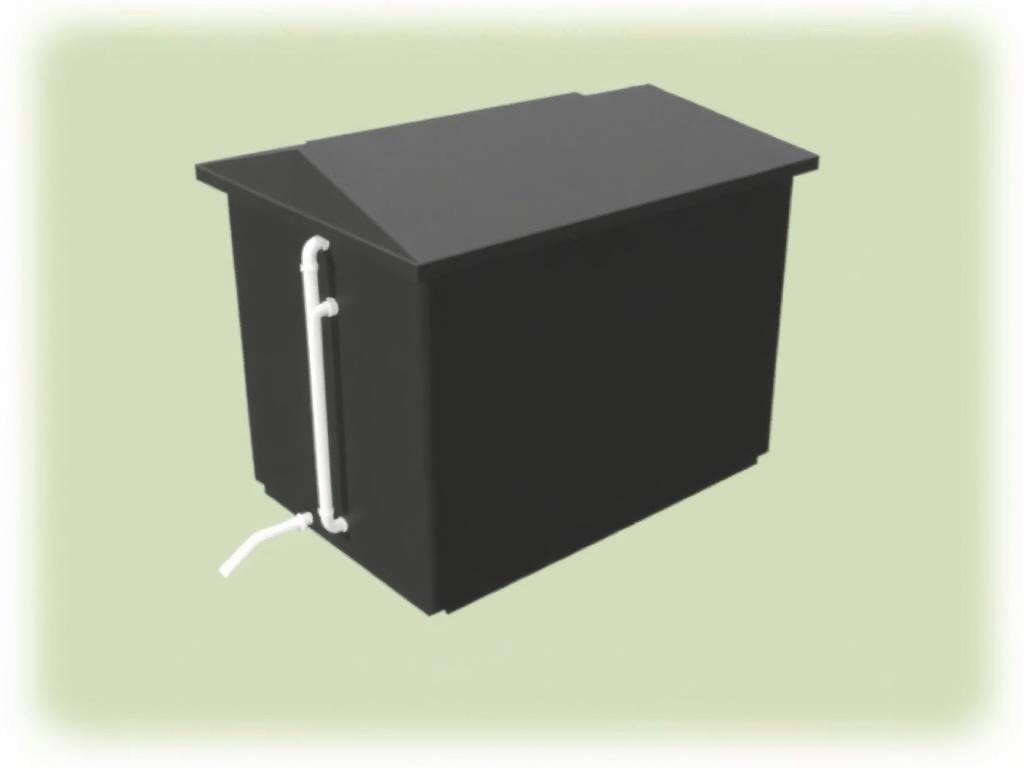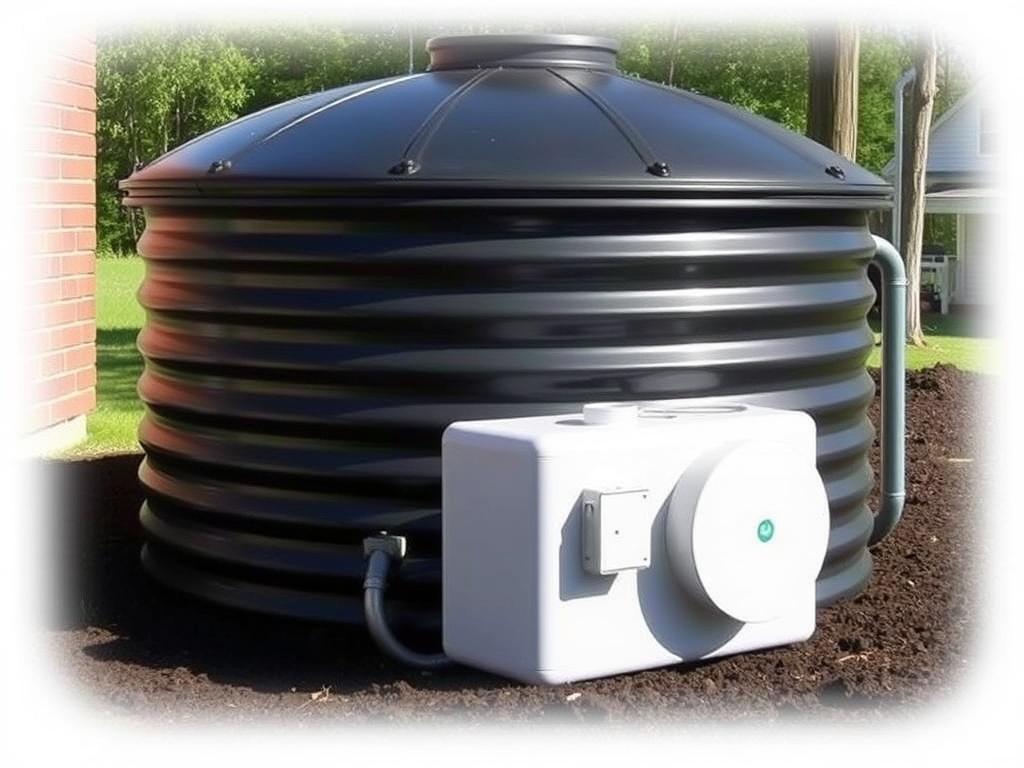When it comes to managing wastewater for a church or community center, installing an efficient septic tank system is essential. These buildings often have unique requirements because they host large groups sporadically or regularly, generating significant amounts of waste that must be treated onsite. Deciding on the right septic tank for a church or community center involves understanding both the technical aspects and the practical needs of the facility. In this article, we will explore everything you need to know about septic tank systems tailored specifically for churches and community centers, from sizing considerations and installation tips to maintenance advice. By the end, you’ll have a clear understanding of how to ensure smooth and eco-friendly wastewater management for these vital communal spaces.
- Understanding Septic Tanks for Churches and Community Centers
- Key Components of a Septic System at a Church or Community Center
- Sizing the Septic Tank for a Church or Community Center
- Calculating Wastewater Flow and Tank Capacity
- Example Tank Size Guidelines
- Installation Considerations for Septic Tanks at Churches and Community Centers
- Site Evaluation and Soil Testing
- Selecting the Right Type of Septic Tank
- Proper Placement and Accessibility
- Drainfield Design
- Maintaining Your Church or Community Center Septic Tank
- Regular Inspection and Pumping
- Best Practices to Protect Your System
- Signs Your Septic System Needs Attention
- Environmental and Health Considerations
- Regulatory Compliance
- Sustainability and Green Practices
- Case Studies: Successful Septic Tank Systems for Churches and Community Centers
- Community Center in a Rural Setting
- A Large Church in a Suburban Area
- Summary Table: Choosing the Right Septic System for Your Church or Community Center
- Conclusion
Understanding Septic Tanks for Churches and Community Centers
Septic tanks are underground wastewater treatment structures commonly used in areas without centralized sewer systems. For a church or community center, installing the right septic tank is critical because these venues experience variable and sometimes heavy use that can strain smaller or poorly designed systems. Unlike residential properties, community facilities often host events, gatherings, and services that lead to concentrated periods of water use, making it necessary to carefully calculate the septic tank capacity and drainage field design.
The first step is recognizing what makes septic tanks for churches and community centers different from typical residential systems. Instead of average daily usage, planners need to consider peak attendance numbers and event durations. The facility’s plumbing layout, restroom count, kitchen facilities, and even outdoor watering or landscaping needs should be factored into the design. Moreover, regulatory compliance and local health department guidelines must be adhered to, ensuring that the system adequately handles the anticipated waste without causing environmental or public health risks.
Key Components of a Septic System at a Church or Community Center
A septic system generally consists of three main parts:
- Septic Tank: A buried, watertight container where solids settle, and wastewater begins the treatment process.
- Drainfield (Leach Field): A shallow, covered excavation that allows the treated liquid from the septic tank to percolate into the soil.
- Soil: Acts as a natural filter to remove harmful bacteria, viruses, and nutrients before water reaches groundwater.
Each component has a specific role in managing wastewater safely and effectively. For a church or community center, ensuring these components are designed with adequate capacity and positioned correctly is crucial to prevent system failure or environmental contamination.
Sizing the Septic Tank for a Church or Community Center

Proper sizing is perhaps the most critical factor when installing a septic tank at a communal facility. You don’t want an undersized system that overflows or an oversized one that costs unnecessarily. The tank size directly correlates with the number of users and the amount of wastewater generated.
Calculating Wastewater Flow and Tank Capacity
Most local building codes and health regulations have formulas or tables to estimate the size of a septic tank based on fixture units or estimated daily water use. For churches and community centers, consider:
- Number of attendees during services or events
- Number of restrooms and fixtures (toilets, sinks, urinals)
- Presence of kitchen or food preparation areas
- Frequency and duration of events
The water usage per person often ranges from 15 to 25 gallons per day in typical settings, but high-use events might spike this number temporarily. It’s advisable to design the septic tank and drainfield to handle these peak loads.
Example Tank Size Guidelines
A typical chart for septic tank sizing in communal settings might look like this:
| Average Number of Users | Recommended Septic Tank Size (Gallons) |
|---|---|
| 50 | 1500 |
| 100 | 3000 |
| 150 | 4500 |
| 200+ | 6000+ |
These numbers are estimates and local regulations should always be consulted to ensure compliance. Additionally, the tank should be designed with future expansion in mind if the church or community center plans to grow.
Installation Considerations for Septic Tanks at Churches and Community Centers
Installing a septic tank for a large facility is a multi-step process requiring careful coordination among architects, civil engineers, septic system professionals, and local authorities. Here are some key aspects to consider during installation.
Site Evaluation and Soil Testing
Before installation, the soil must be tested to determine its absorption capacity and suitability for a drainfield. Sandy or gravelly soils drain well, while clay-heavy soils may require enhanced designs such as mound systems or advanced treatment technologies. The site’s topography, proximity to water tables, and potential flooding hazards should also be assessed.
Selecting the Right Type of Septic Tank
There are several types of septic tanks:
- Concrete Tanks: Durable and widely used in larger installations.
- Plastic (Polyethylene) Tanks: Lightweight and resistant to cracking but may be less preferred for large capacities.
- Fiberglass Tanks: Corrosion-resistant and light but typically more expensive.
For churches and community centers, concrete tanks are often the go-to option due to their longevity and structural integrity, especially at large sizes.
Proper Placement and Accessibility
The tank should be installed in a location that allows easy access for pumping and maintenance while keeping a safe distance from buildings, water wells, and property lines. Most codes require septic tanks to be at least 10 feet away from buildings and 50 feet from wells to prevent contamination.
Drainfield Design
A properly sized and installed drainfield ensures the treated effluent safely percolates into the ground. For high-use communal centers, drainfields are often larger and sometimes configured with multiple trenches or beds to spread out the flow.
Maintaining Your Church or Community Center Septic Tank
Once your septic tank and system are installed, proper maintenance is vital to keep it operating smoothly for years.
Regular Inspection and Pumping
Septic tanks for communal facilities should be inspected at least once a year, with pumping scheduled based on usage frequency and sludge accumulation. A church or community center might require pumping every 2-3 years or sometimes annually during peak activity seasons.
Best Practices to Protect Your System
- Limit non-biodegradable or chemical waste disposal through drains.
- Avoid excessive water use that can overwhelm the system.
- Educate users on what should and should not be flushed.
- Maintain the drainfield by preventing soil compaction and planting shallow-rooted grasses instead of trees to avoid root intrusion.
Signs Your Septic System Needs Attention
Be alert to these warning signs:
- Slow drains or backups inside the building
- Pooling water or bad odors near the septic tank or drainfield
- Unusual lush vegetation growth over the drainfield
- Wet or spongy soil over the drainfield area
Early detection and repair can save considerable expense and prevent environmental damage.
Environmental and Health Considerations
An effective septic tank system for a church or community center isn’t just about engineering; it also protects public health and the surrounding ecosystem. Poorly functioning systems can contaminate groundwater with pathogens and nutrients, leading to health risks and environmental degradation.
Regulatory Compliance
Local and state regulations often mandate specific design standards, permits, and inspections for septic tank installations at communal buildings. Familiarizing yourself with these rules early in the planning phase helps avoid costly redesigns or delays.
Sustainability and Green Practices
Many community centers and churches are adopting environmentally responsible wastewater solutions. Options include:
- Advanced Treatment Systems: These include aerobic treatment units that add oxygen to boost bacteria growth, improving wastewater quality.
- Constructed Wetlands: Natural biofilters that treat effluent through vegetation.
- Water Conservation Measures: Low-flow fixtures and smart water use reduce the burden on septic systems.
Adopting such practices not only minimizes environmental impact but can also reduce maintenance costs and extend system life.
Case Studies: Successful Septic Tank Systems for Churches and Community Centers
Looking at real-life examples provides insight and inspiration when planning your septic system.
Community Center in a Rural Setting
A rural community center serving around 150 people installed a 4500-gallon concrete septic tank paired with a multi-trench drainfield designed following thorough soil testing. By scheduling pumping every two years and educating attendees on wastewater practices, the center has enjoyed trouble-free system operation for over a decade.
A Large Church in a Suburban Area
A suburban church with regular weekly attendance of 300 plus events invested in a 6000-gallon septic tank with an advanced aerobic treatment system. The system’s sophisticated monitoring tools and maintenance contracts ensure compliance with strict local health codes, demonstrating that scalable septic solutions can fit within the demands of busy communal spaces.
Summary Table: Choosing the Right Septic System for Your Church or Community Center

| Factor | Considerations | Recommendations |
|---|---|---|
| Size/Capacity | Number of users, peak usage, plumbing fixtures | Calculate flow, oversize for growth |
| Tank Material | Durability, cost, size availability | Concrete preferred for large systems |
| Drainfield | Soil type, space, regulations | Design based on soil test and usage |
| Maintenance | Inspection frequency, pumping schedule | Annual inspection, pump every 2-3 years |
| Environmental Impact | Effluent quality, proximity to water sources | Advanced systems + water conservation |
Conclusion
Choosing and managing the right septic tank for a church or community center takes thoughtful planning, technical knowledge, and ongoing care. These sites require systems designed to handle unique usage patterns and larger crowds compared to typical homes. By accurately sizing the septic tank, adhering to installation best practices, conducting regular maintenance, and considering environmental factors, facility managers can ensure long-term, trouble-free wastewater management. Doing so protects both the health of the community and the surrounding environment, allowing churches and community centers to continue serving as safe and welcoming places for everyone. If you’re considering installing or upgrading a septic system for your communal facility, investing time in proper design and upkeep will pay dividends in peace of mind and operational success.
Помогла вам статья?






